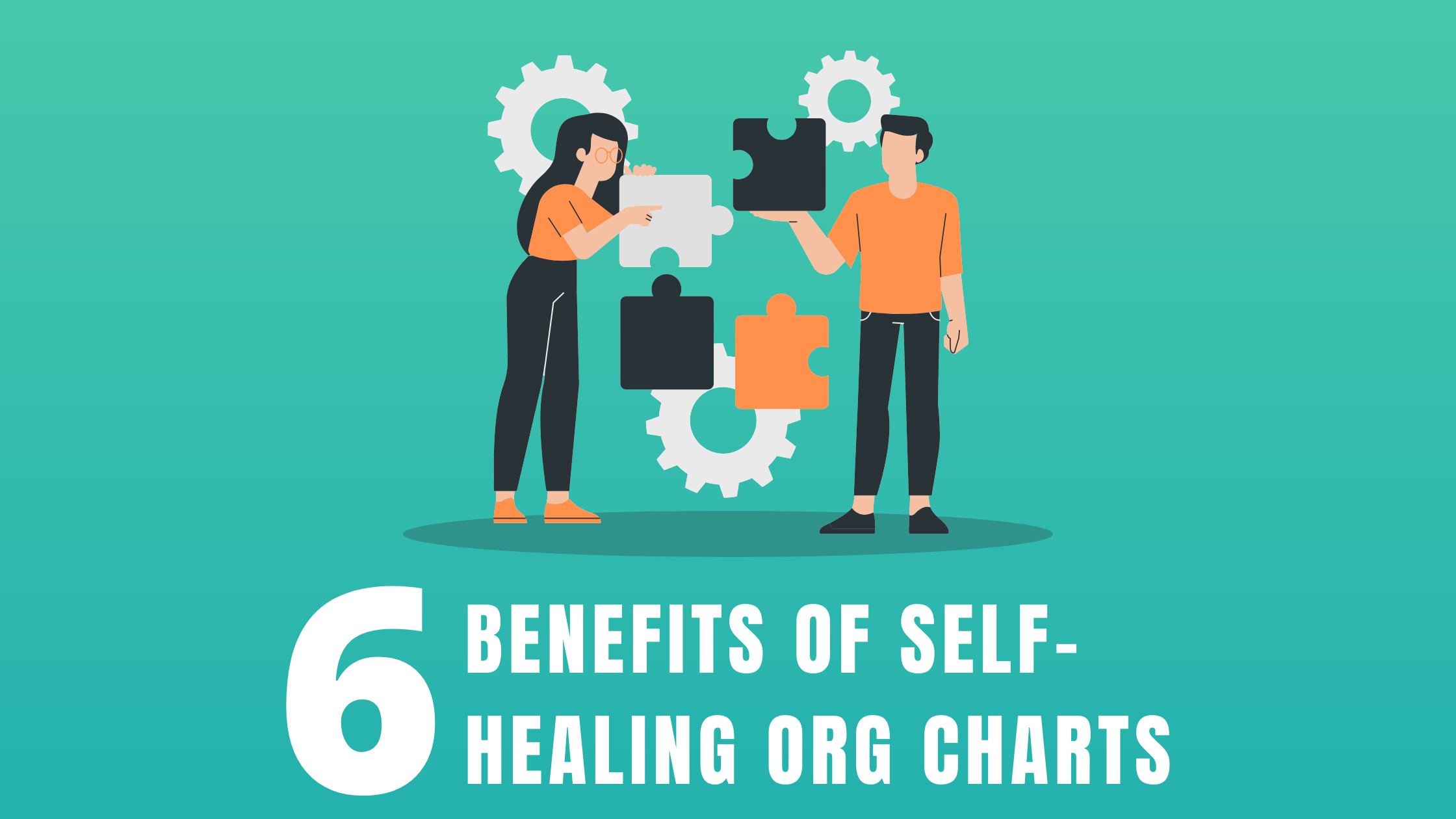Org charts are a great visual tool for showcasing organisational structure, but they have to be up-to-date. Companies are constantly growing and changing, and a manually updated org chart cannot keep up with these changes. Not to mention, updates to the chart can be quite an investment for companies to complete regularly. A self-healing org chart eliminates this issue by creating a hub that major HR tasks can be initiated from.
I will further discuss the benefits of a self-healing org chart below, but first, let’s discuss what a self-healing org chart actually is.
What is a self-healing Org Chart?
Org chart is short for organisational chart, and as the name suggests, an org chart is a diagram that outlines the structure of an organisation. They have been dated as far back as 1854, and help to show the reporting lines within a company. Today some org charts can also be used as a platform to initiate HR tasks from and store employee information.
What makes a self-healing org chart unique is that it doesn’t have to be constantly updated manually. Instead, it organically updates itself when HR and managers complete their everyday tasks within the platform. For example completing a change of staffing conditions would be 2 fold with an ordinary org chart, but not with a self-healing one. Instead HR can initiate an important task like this directly from within the org chart itself, instead of jumping between platforms.
Their benefits

Easy to understand and navigate
Studies have found that we process images 60 000 times faster than we do text. So a natural conclusion to this is that our brains are more accustomed to receiving information visually. An org chart is a great way to give otherwise stagnant information visual interest to be better understood.
The visual format of an org chart allows for easy navigation and accessibility to relevant data. Meaning less time has to be spent interpreting information.
Up-to-date and reliable
An org chart is only useful when up-to-date, but most org chart tools require manual updates. Manual updates are not sustainable for a growing company as they take time and cost the company money.
A self-healing org chart, such as ours, eliminates this problem with organic updates triggered by everyday HR tasks within the platform. These real-time updates keep stakeholders informed and on the same page.
Facilitates collaboration
Many org chart tools don’t allow for multiple administrators, limiting the potential for collaboration. However, our org chart software allows for multiple administrators and promotes collaboration amongst HR and management. Custom access levels help maintain control and order within this collaboration.
Helps you remain legally compliant
According to the Australian Fair Work Ombudsman, there are currently more than 100 different industry awards in Australia. Each award outlines the minimum standards and wage that an employee in a specific industry can be paid. These awards are constantly being reviewed and updated, and employers must ensure their own compliance. Even the slightest miscommunication regarding employee remunerations could have serious legal ramifications.
With a self-healing org chart, employee remunerations are clear, up-to-date and consistent across the platform. Meaning accurate evaluation and review can be made against changing industry awards without fear of misinformation.
Helps to identify resource issues
Gaps in resources are fairly obvious when presented visually. Org charts clearly show where resources are and are not, without bias. Having an overarching picture of the organisation allows managers to better allocate resources to where they are needed most.
Another similar issue org charts highlight is each employee’s span of control. Span of control refers to the number of people that directly report to an employee. A wide span of control can leave supervisors overloaded and unable to support their teams effectively. A narrow span of control is not good either, as it is expensive and can make subordinates feel micromanaged. Org charts visualise this issue and facilitate further reviews via the information stored in each employee’s node.
Self-serviced customisations
The ability for a platform to legitimately be fully customisable is rare. Most software that claim to be fully customisable doesn’t let you make structural changes yourself. But with a dynamic org chart, you can quickly and easily implement changes without the need for a developer. Presenting you with a rare opportunity to play around with the platform yourself and make your perfect org chart a reality.
How to create one in three steps
No matter the size or structure of the organisation, these are the steps you need to get started using our self-healing org chart software:
- Create a parent node
- Create a child node
- Repeat as needed
That’s all there’s to it. Once you have finished setting up all your nodes, you should now be able to use this org chart to initiate major HR tasks including:
- Request-to-recruit
- Onboarding
- Cross-boarding
- Change of staff conditions
- Off-boarding
Now you can play around with the system and see what works best for your organisation.
Final thoughts
Org charts offer your organisation a world of potential benefits if they are kept up-to-date. However, keeping an org chart up-to-date should not come at the expense of your other HR tasks. A self-healing org chart system streamlines this process and integrates it with your everyday tasks – meaning there is no need to do the same thing twice.
You cannot be getting the most out of your org chart if you constantly have to be putting so much work in. Discover more about our self-healing org charts here, and see how they work for yourself.

